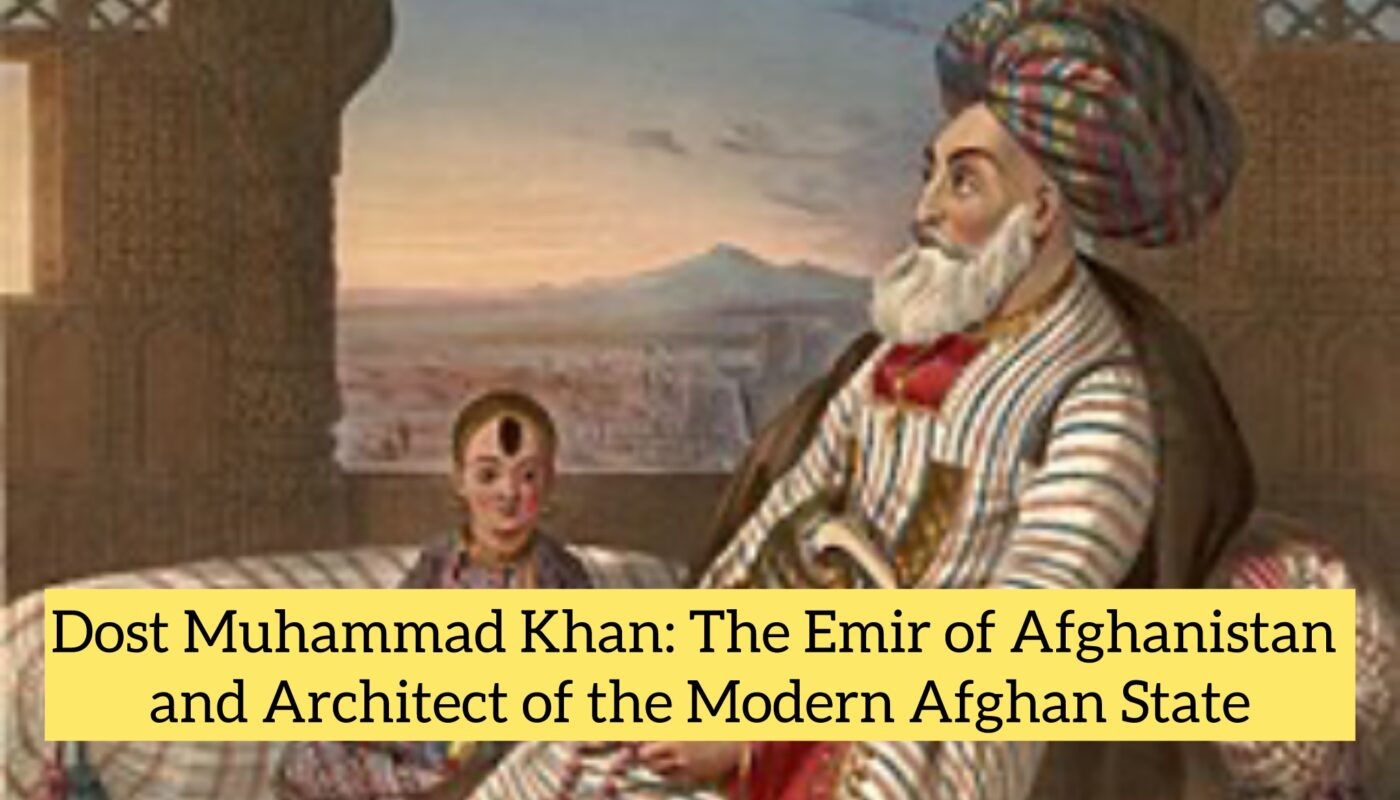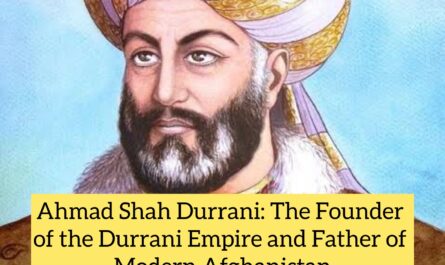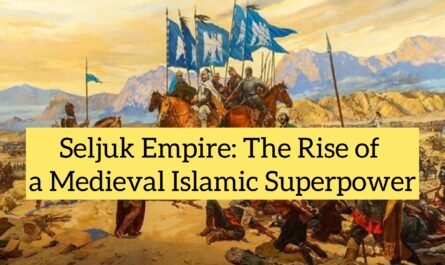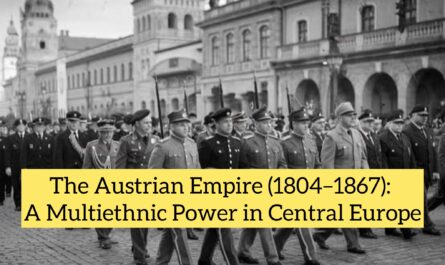Introduction
Dost Muhammad Khan (1793–1863) was one of the most significant and influential figures in Afghan history, best known for his role in the formation of modern Afghanistan. As the Emir of Afghanistan, he played a central role in navigating the complex political and military challenges of his time. Through his leadership, he was able to establish his own dynasty, the Barakzai dynasty, and successfully maintain Afghan independence against powerful foreign powers like the British Empire and the Persian Empire.
Dost Muhammad’s reign witnessed immense political turmoil, including the First Anglo-Afghan War and the shifting balance of power in Central and South Asia. His ability to unify Afghanistan’s fragmented tribal landscape, manage foreign relations, and strengthen the Afghan state is a testament to his resilience and political acumen. Despite facing both internal and external challenges, Dost Muhammad Khan is regarded as the man who laid the groundwork for Afghanistan’s sovereignty during a time of intense geopolitical competition.
Early Life and Background
Birth and Family
Dost Muhammad Khan was born in 1793 into the Barakzai clan of the Durrani Pashtun tribal confederation. His father, Payenda Khan, was a tribal chief, and Dost Muhammad was raised in a family with deep ties to Afghan politics and military affairs. The Barakzai family had a prominent role in the Durrani Empire, which had been founded by Ahmad Shah Durrani in the mid-18th century. However, by the time Dost Muhammad was born, Afghanistan had fractured into a collection of small tribal kingdoms, and the Durrani Empire had largely disintegrated.
Afghanistan’s political landscape was divided among competing factions, many of which were involved in constant power struggles. The region was also under the influence of neighboring powers like the British and Persians, both of whom sought to extend their influence over Afghanistan. Dost Muhammad’s early years were shaped by the instability and chaos of this fractured environment.
Early Career and Rise to Power
Dost Muhammad’s military and political career began when he was appointed as a governor of Kabul by Shah Shuja Durrani, the former king of Afghanistan. In this role, he worked to consolidate his power within the Afghan elite. His leadership qualities soon became apparent, and he gained the loyalty of many key Afghan tribes, especially the Kabul and Peshawar regions.
In the early 19th century, the Durrani monarchy had been weakened by internal rivalries. Shah Shuja was overthrown by his cousin, Mahmud Shah, and the political landscape was further destabilized. Amidst this uncertainty, Dost Muhammad began to assert his authority, leveraging his family’s influence and his military skills. By 1826, Dost Muhammad had effectively seized control of Kabul and declared himself the ruler of Afghanistan, laying the foundation for his dynasty.
Consolidation of Power
Unification of Afghanistan
Dost Muhammad faced the challenge of uniting the fractured Afghan tribes under his banner. Afghanistan, during his rise, was not a cohesive state but rather a patchwork of competing regional powers, each with its own tribal loyalties and rivalries. In order to establish his authority, Dost Muhammad adopted a policy of political pragmatism, using alliances, marriages, and strategic military campaigns to bring various tribes under his control.
By 1834, he had successfully consolidated his power over the major cities of Afghanistan, including Kabul, Kandahar, and Herat. He also managed to establish a central government that balanced the demands of the powerful Pashtun tribes with the needs of the urban elites in Kabul and Kandahar.
Dost Muhammad’s diplomacy played a crucial role in his success. He was skilled at navigating the delicate tribal politics of Afghanistan and was able to forge relationships with key tribal leaders. He also made use of Persian and Russian support to strengthen his position, although his relationships with both powers would be tested in the coming decades.
Relations with the British Empire
The First Anglo-Afghan War (1839–1842)
Dost Muhammad’s reign coincided with the height of British imperialism in the Indian subcontinent. The British Empire, concerned about Russian influence in Central Asia, was intent on maintaining control over Afghanistan as a buffer state. In 1838, the British intervened in Afghan affairs, backing a rival claimant to the Afghan throne, Shah Shuja Durrani, and aiming to remove Dost Muhammad from power.
In response, Dost Muhammad fiercely resisted British interference. In 1839, British forces launched an invasion of Afghanistan, leading to the First Anglo-Afghan War. Dost Muhammad was forced to flee Kabul, and the British installed Shah Shuja as the puppet ruler. However, the British occupation of Afghanistan proved disastrous.
The British forces faced stiff resistance from Afghan insurgents, and in 1842, following a failed attempt to secure control over the country, they were forced to retreat. The British retreat from Kabul was a humiliating defeat, and Dost Muhammad was able to return to the throne in 1843, strengthening his position as the leader of Afghanistan.
This victory cemented his reputation as a national hero and secured his authority for the remainder of his life. The British, chastened by their defeat, shifted their focus toward other means of securing influence over Afghanistan but were no longer able to directly control the country.
Relations with Persia and Russia
Struggles with Persia
While Dost Muhammad was engaged with the British, he also faced threats from neighboring Persia. In the early 19th century, the Persian Empire under Fath Ali Shah sought to extend its influence into Afghanistan, particularly in the strategic region of Herat. Persia’s expansionist ambitions were a direct challenge to Afghan sovereignty.
In 1837, Dost Muhammad’s forces repelled a Persian invasion, defending Herat. The conflict, though resolved for the time being, would continue to shape Afghan-Persian relations for the rest of his reign. The Persian invasion of Herat was one of the defining moments of Dost Muhammad’s reign, and he became recognized as the protector of Afghan independence.
The Great Game and Relations with Russia
Dost Muhammad’s foreign policy was also heavily influenced by the Great Game, the geopolitical struggle between Russia and Britain for dominance in Central Asia. The Russian Empire’s expanding influence in the region posed a direct threat to British interests, and Afghanistan became a critical player in the balance of power.
Dost Muhammad skillfully navigated this complex web of foreign relations. He sought to maintain Afghan independence by playing both powers off each other. Initially, he sought Russian support to counterbalance British pressure, but he was also cautious about getting too closely involved with Russia, recognizing the potential threat posed by Russian expansionism.
Later Years and Decline
Internal Struggles and the Decline of His Empire
In the later years of his reign, Dost Muhammad faced internal challenges as well. Despite his successes in unifying Afghanistan, the country remained plagued by tribal rivalries. The Durrani Empire was not a fully centralized state, and local warlords and tribal chiefs often resisted central authority. Dost Muhammad’s ability to maintain power depended on his ability to balance these tribal interests.
By the time of his death in 1863, Dost Muhammad had succeeded in preserving Afghanistan’s independence, but the empire itself was unstable. His sons would soon fall into conflict with each other over the throne, leading to a period of dynastic strife.
Legacy
Dost Muhammad Khan’s legacy is complex. On one hand, he is revered as the man who preserved Afghanistan’s independence during a period of intense foreign interference. His ability to resist both British and Persian encroachment is one of his most significant achievements. His reign also established the Barakzai dynasty, which would rule Afghanistan for much of the 19th and early 20th centuries.
However, his reign was also marked by political fragmentation, tribal rivalries, and an inability to establish a fully cohesive Afghan state. Despite his efforts, the power of the central government remained weak, and Afghanistan’s internal divisions would continue to plague the country in the years following his death.
Conclusion
Dost Muhammad Khan is remembered as one of Afghanistan’s most important and capable rulers. His role in preserving Afghanistan’s sovereignty during the 19th century, especially against the encroaching imperial powers of Britain and Persia, has earned him a place in Afghan history as a symbol of independence and resilience. While his reign was not without challenges, and his empire ultimately fragmented, his legacy as the founder of modern Afghanistan and the man who kept his country independent remains secure.
In Afghanistan today, Dost Muhammad is viewed as a foundational figure in the country’s history, a leader who fought to maintain Afghan sovereignty in a time of foreign domination and internal division.



